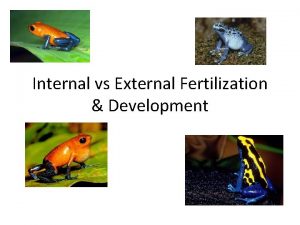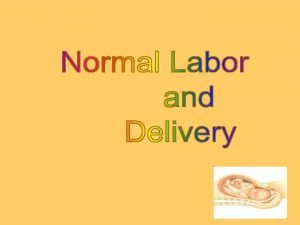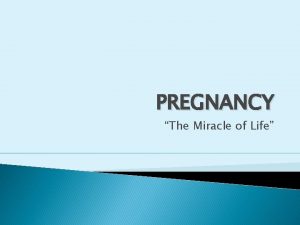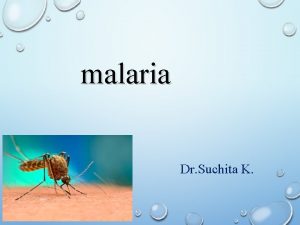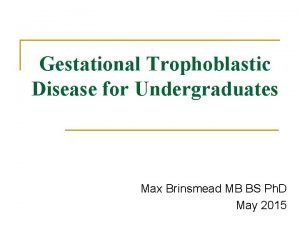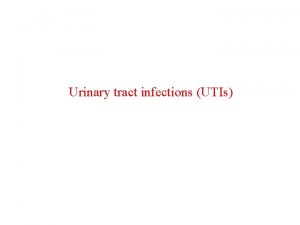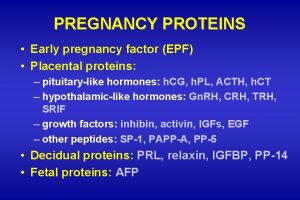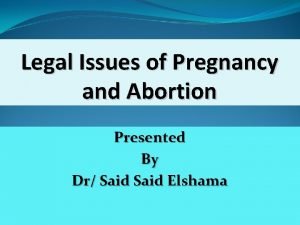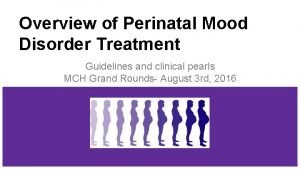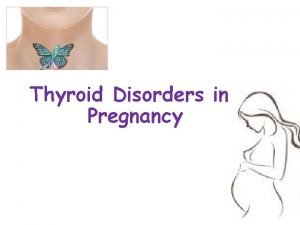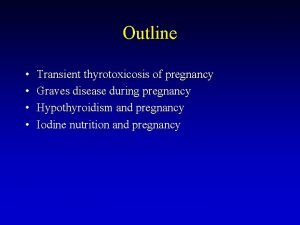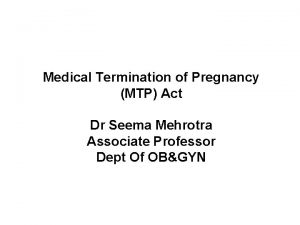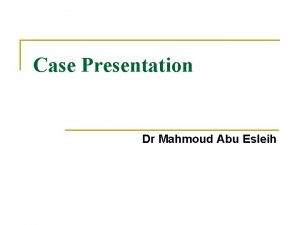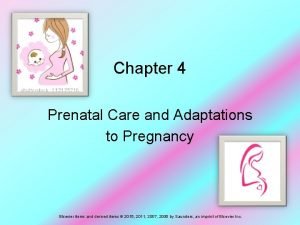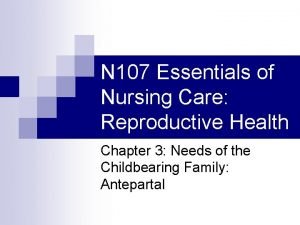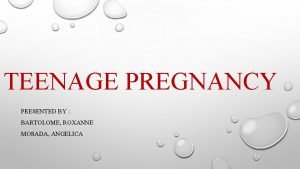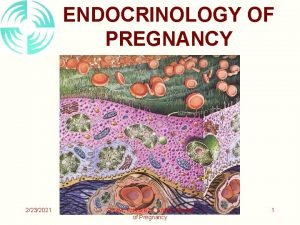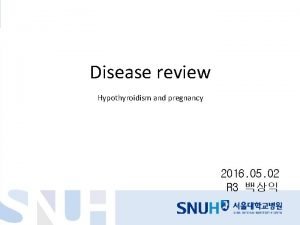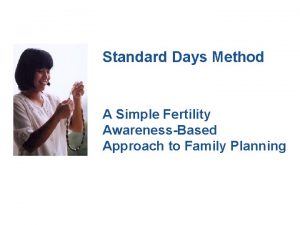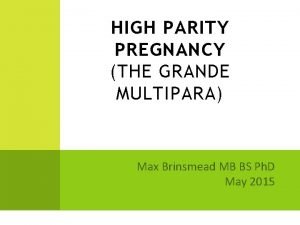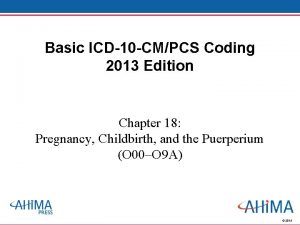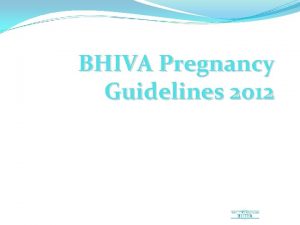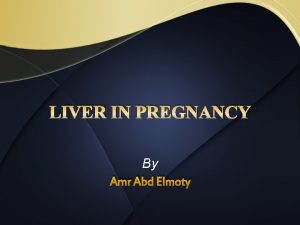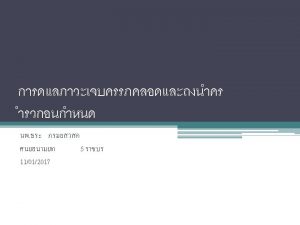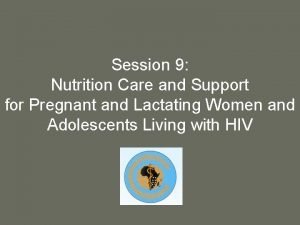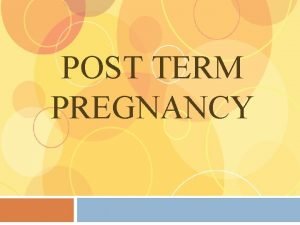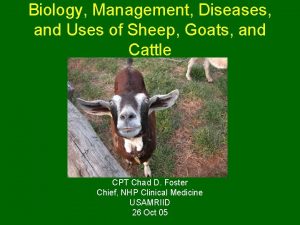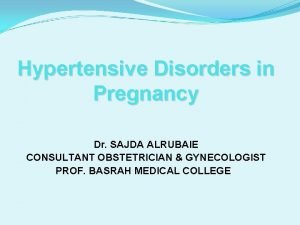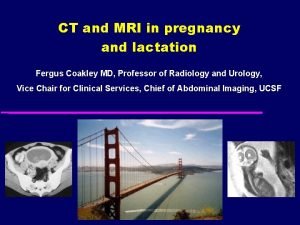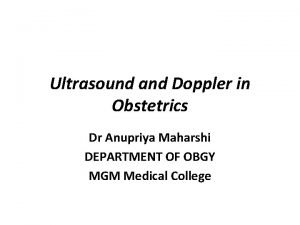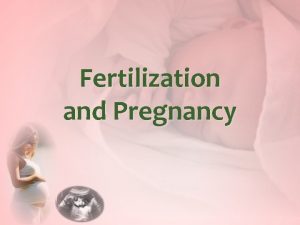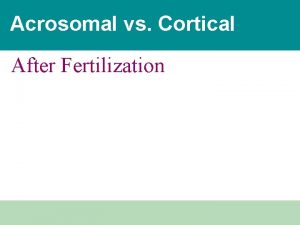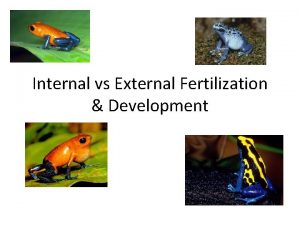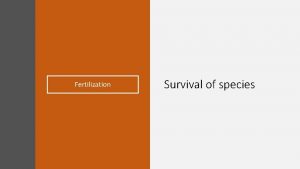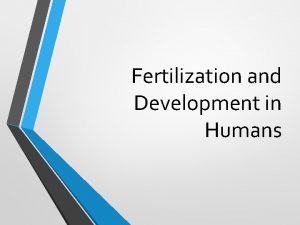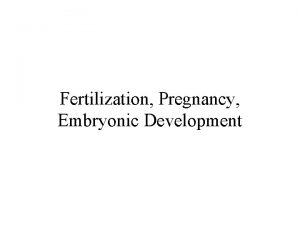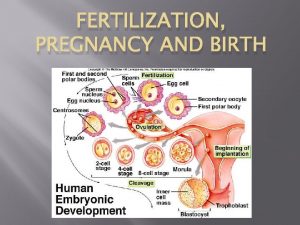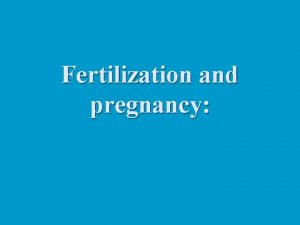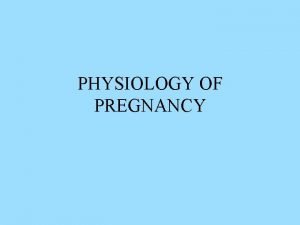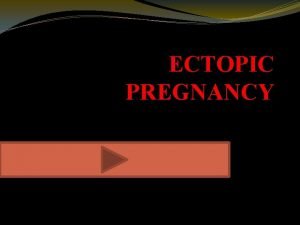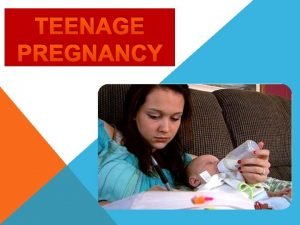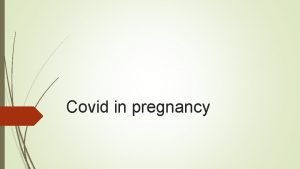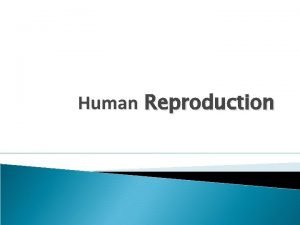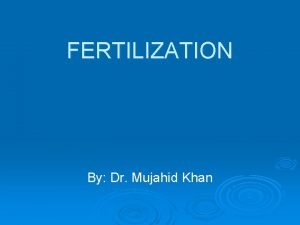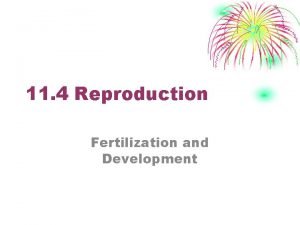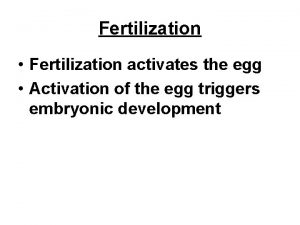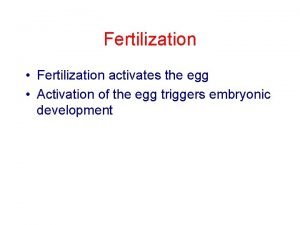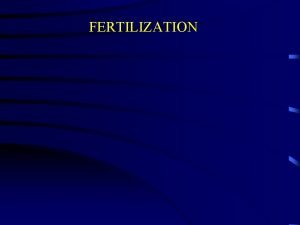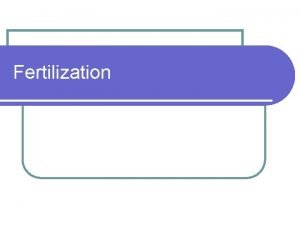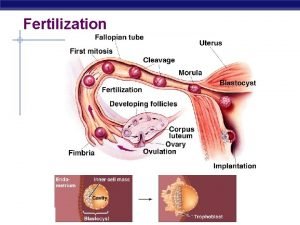Fertilization Pregnancy What is Fertilization fertilization is when












































- Slides: 44

Fertilization & Pregnancy

What is Fertilization? • fertilization is when the haploid (N) sperm connects and "mixes" chromosomes with the haploid (N) ovum • occurs in the fallopian tube • occurs following ovulation • egg is only viable for about 24 hours after ovulation • sperm can live inside the body for 3 days

Ovum Fertilization Watch fertilization video

4 steps of fertilization 1. Sperm binding (to zona pellicida) 2. Acrosome reaction (sperm enzymes) 3. Cortical reaction(prevent polyspermy) 4. Genetic transfer(male DNA to ova)

Development of a Zygote to Embryo Ova Zygote Cleavage Morula Blastula Gastrula Embryo Fetus

Early Embryology

Gastrulation • The process where the single layers blastula folds into a three layers gastrula. • • Ectoderm becomes skin and nervous system. • Mesoderm becomes skeletal system, heart, circulatory vessels • Endoderm becomes digestive system

Gastrulation

Gastrulation

Zygote forms half the placenta

Hormone Changes After Fertilization • Human Chorionic Gonadotropin hormone (HCG) is produced by placenta as soon as embryo implants in wall • HCG tells corpus luteum to continue to make Estrogen and Progesterone • hormone tested for in pregnancy tests (will be in urine and blood) • HCG is also what can cause morning sickness

Development of fetus (Week 1 – 9) What do you notice? What do you wonder?

What do you notice? What do you wonder?


What do you notice? What do you wonder?

Identical versus Fraternal Twins

One Placenta or two? One Membrane or two?

Coinjoined Twins



Ultrasounds

At the end of the 40 weeks. . . now what? ? • baby is head down in pelvic cavity • pressure of head on cervix causes release of oxytocin hormone • produced in hypothalamus and stored and released by pituitary


At the end of the 40 weeks. . . now what? ? • This causes contractions of myometrium • this causes extra pressure on cervix, which causes extra release of oxytocin. . . positive feedback loop

Positive Feedback Loop

Positive Feedback Loop vs Negative Feedback Loop

Labour and Delivery What do you notice? What do you wonder?


Mammary Gland Development A mammary gland is an exocrine gland that produces milk to feed young offspring. Breasts develop after puberty due to estrogen Prolactinis the hormone that helps produce milk, produced in pituitary Prolactin is suppressed by the progesterone made in pregnancy • Estrogen and prolactin cause the production of milk in lobes • 15 lobes and milk ducts that bring milk to the nipple

Mammary Gland Development • • • Mammary glands are modified sweat cells The areola contains secretory glands that help during nursing Glands connected with lymphatic system to help drain extra tissue (antibodies in breast milk to develop fetal immunity)

Mammary Gland Development • Oxytocin is the hormone involved in milk release • Colostrom is the fluid released in the first couple nursing let downs and contain high antibodies and protective proteins • Suckling of the baby causes a release of oxytocin from the posterior pituitary to create pressure in milk lobes and release milk.

Keeping Your Reproductive System Healthy STI Prevention • Viral and bacterial infections can scar and harm reproductive system • Choose a barrier contraception method prevents genital tissues from touching Pregnancy Prevention • Preventing gametes from fertilizing • Choose either a barrier or chemical method that prevents fertilization

TYPES OF CONTRACEPTION Barrier Method: Stops gametes from meeting Condom (male and female) Diaphragm Cervical cap Sponge Sterilization Chemical Method: Prevents ovulation and thickens cervical mucous Mini Pills (Prog only) Combo Pills IUD Injection Patch Implant NO STI protection

Types of Contraception Watch video

BIRTH CONTROL PILLS Watch video

MINI PILLS (PROGESTIN ONLY) • Progestin-only birth control pills, sometimes called “mini-pills, ” have several effects in the body that help prevent pregnancy: • The mucus in the cervix thickens, making it difficult for sperm to enter the uterus and fertilize an egg • They stop ovulation, but they do not do so consistently. About 40% of women who use progestin-only pills will continue to ovulate • They thin the lining of the uterus • NO STI Protection!!!

COMBINATION PILLS (PROGESTERONE AND ESTROGEN) The heightened levels of progesterone and estrogen suppress FSH and LH from maturing and releasing another ova…no ovulation

I. U. D 99% effective Can be plastic with hormone release or copper Prevent sperm from successfully making it through the uterus Copper kills sperm NO STI Protection!!!

BIRTH CONTROL PATCH • Releases hormones through the skin • Contains estrogen and progesterone • Prevents ovulation and thickens cervical mucous • Put on new patch each week • NO STI Protection!!!

NO STI PROTECTION STERILIZATION Vasectomy Males Tubal Ligation Females

NEXPLANON • Implant in the arm • Releases progestine • Lasts 5 years • Doctor implants • NO STI Protection!!!

DIAPHRAGM • Acts as a barrier to prevent sperm from going up uterus • Used in conjunction with spermicidal jelly which contains a chemical which will kills sperm • NO STI Protection!!!

CONDOMS • The only form of contraception which has SOME protection against STI infections • Acts as a barrier so that gametes do not meet. If gametes do not meet, fertilization can not occur Male Condom Female Condom

HOMEWORK • Complete the female Reproduction Worksheet (from last class) and check answer key on website • Complete the UNIT REVIEW (handed out today) • Study for final 30 minutes each evening
 Implantation spotting
Implantation spotting Internal vs external development
Internal vs external development Restitution pregnancy
Restitution pregnancy 8 weeks pregnant ultrasound
8 weeks pregnant ultrasound Malaria in pregnancy definition
Malaria in pregnancy definition Hispanic cultural views on teenage pregnancy
Hispanic cultural views on teenage pregnancy Follow up of molar pregnancy
Follow up of molar pregnancy Urinary tract infection in pregnancy ppt
Urinary tract infection in pregnancy ppt Early pregnancy factor
Early pregnancy factor Partial molar pregnancy
Partial molar pregnancy Hyde amendment
Hyde amendment Paxil in pregnancy
Paxil in pregnancy Episiotomy indications
Episiotomy indications Mitchella repens pregnancy
Mitchella repens pregnancy Tiroid storm
Tiroid storm For teenage pregnancy
For teenage pregnancy Normal pregnancy definition
Normal pregnancy definition Mifepristrone
Mifepristrone Svt pregnancy
Svt pregnancy Medicolegal importance of lochia
Medicolegal importance of lochia Management of allergic rhinitis
Management of allergic rhinitis Prenatal care and adaptations to pregnancy
Prenatal care and adaptations to pregnancy Height of fundus during pregnancy
Height of fundus during pregnancy Roxanne bartolome
Roxanne bartolome Endocrinology of pregnancy
Endocrinology of pregnancy Contraindicated drugs in pregnancy
Contraindicated drugs in pregnancy Target tsh in hypothyroidism in pregnancy
Target tsh in hypothyroidism in pregnancy Pregnancy odds
Pregnancy odds High parity
High parity Icd 10 code for ectopic pregnancy
Icd 10 code for ectopic pregnancy Bhiva guidelines pregnancy
Bhiva guidelines pregnancy Mississippi classification of hellp syndrome
Mississippi classification of hellp syndrome Tocolytic
Tocolytic Folic acid dose in pregnancy
Folic acid dose in pregnancy Type of errors in statistics
Type of errors in statistics Post dated pregnancy complications
Post dated pregnancy complications American thyroid association guidelines pregnancy 2017
American thyroid association guidelines pregnancy 2017 Taxonomy of goat
Taxonomy of goat Sajda during pregnancy
Sajda during pregnancy Hegar's sign in pregnancy
Hegar's sign in pregnancy Lchad deficiency
Lchad deficiency Pregnancy mri
Pregnancy mri Yolk sac pregnancy
Yolk sac pregnancy What is visitor pre registration in picme
What is visitor pre registration in picme Dr anupriya maharshi
Dr anupriya maharshi

